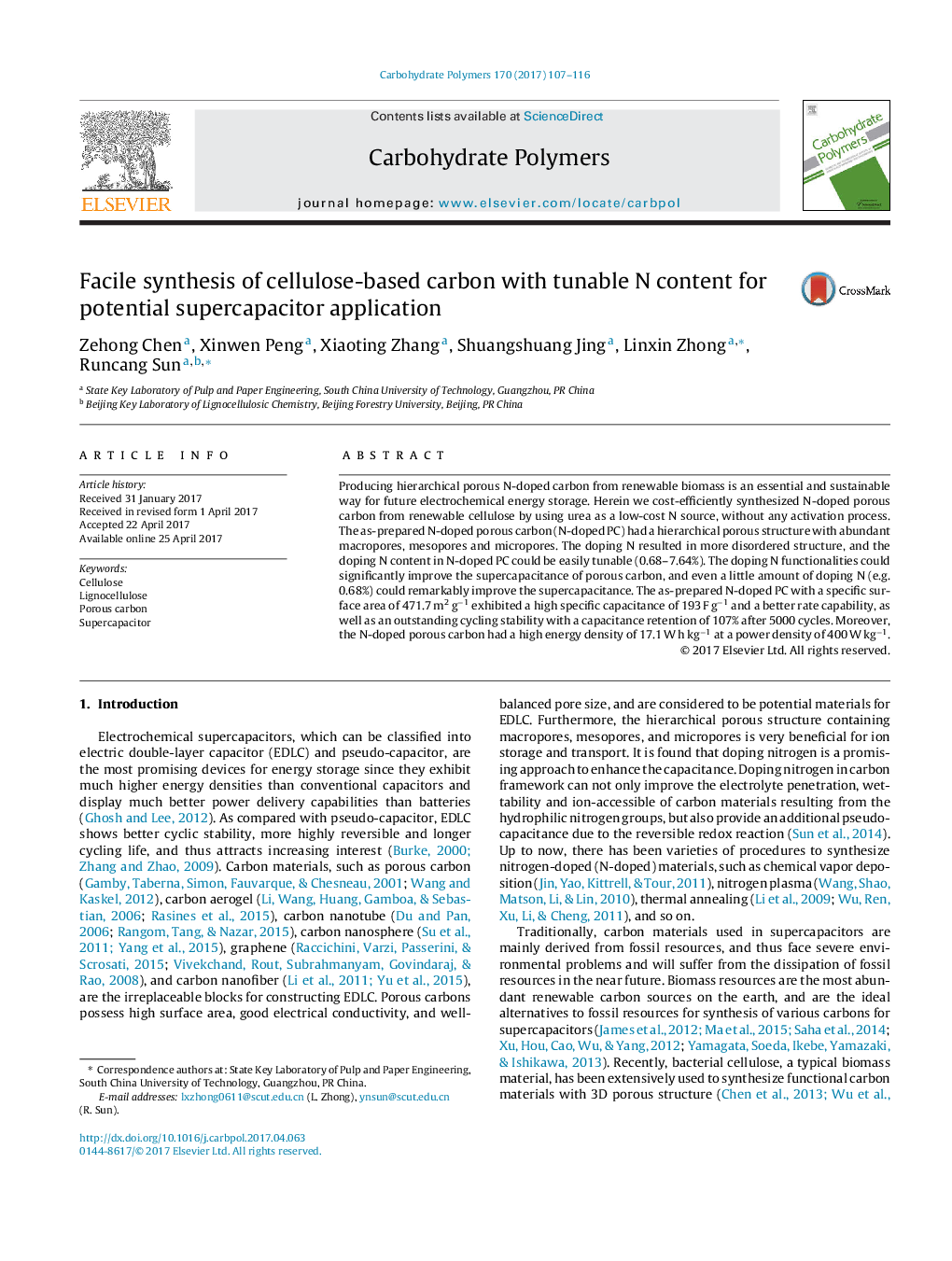| Article ID | Journal | Published Year | Pages | File Type |
|---|---|---|---|---|
| 5157622 | Carbohydrate Polymers | 2017 | 10 Pages |
Abstract
Producing hierarchical porous N-doped carbon from renewable biomass is an essential and sustainable way for future electrochemical energy storage. Herein we cost-efficiently synthesized N-doped porous carbon from renewable cellulose by using urea as a low-cost N source, without any activation process. The as-prepared N-doped porous carbon (N-doped PC) had a hierarchical porous structure with abundant macropores, mesopores and micropores. The doping N resulted in more disordered structure, and the doping N content in N-doped PC could be easily tunable (0.68-7.64%). The doping N functionalities could significantly improve the supercapacitance of porous carbon, and even a little amount of doping N (e.g. 0.68%) could remarkably improve the supercapacitance. The as-prepared N-doped PC with a specific surface area of 471.7 m2 gâ1 exhibited a high specific capacitance of 193 F gâ1 and a better rate capability, as well as an outstanding cycling stability with a capacitance retention of 107% after 5000 cycles. Moreover, the N-doped porous carbon had a high energy density of 17.1 W h kgâ1 at a power density of 400 W kgâ1.
Related Topics
Physical Sciences and Engineering
Chemistry
Organic Chemistry
Authors
Zehong Chen, Xinwen Peng, Xiaoting Zhang, Shuangshuang Jing, Linxin Zhong, Runcang Sun,
